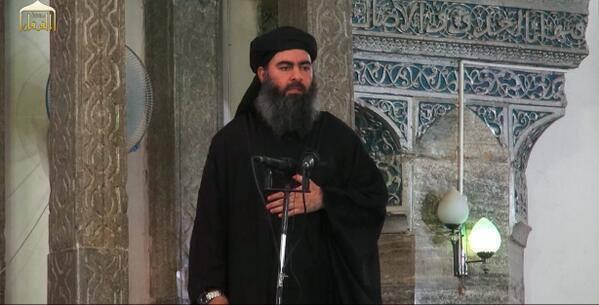
Abu Bakr al-Baghdadi assumed the leadership of what was then known as the Islamic State of Iraq in 2010, succeeding Abu Umar al-Baghdadi, who was killed earlier that year. He inherited a violent, if weakened, organization. Yet within a short amount of time, he had successfully reorganized, broken away from the mother organization al-Qaeda, taken control of large parts of Iraq and Syria, eliminating ‘the borders of humiliation’ between the two countries, and subsequently established the Islamic State (IS) and proclaimed a caliphate.
The mastermind behind a series of deadly terror attacks since 2011, it would be easy to assume that al-Baghdadi came from a violent background himself. But his contemporaries paint a very different picture. Born in 1971 in the city of Samarra, north of Baghdad, to the al-Badri tribe, al-Baghdadi’s real name is Ibrahim Awwad Ibrahim Ali al-Badri al-Samarrai.
As a student, al-Baghdadi moved to Baghdad, earning a bachelor’s degree, a master’s degree and then a doctorate in sharia law. Up until 2004, he lived in a room next to a mosque in Tabaji, a poor neighbourhood on the outskirts of the capital.
In an article published by Britain’s The Telegraph, those who knew al-Baghdadi as a young man described him as a shy, unimpressive religious scholar. He was also a promising football player, dubbed by one of the interviewees as “the [Lionel] Messi of our team”.
So how did a shy footballer become the world’s most wanted man? Some sources suggest that a four-year stint in an American jail was the turning point. Al-Baghdadi was captured and imprisoned in the American-run Camp Bucca in 2005, after US intelligence reports claimed he was fighting the US occupation. The detainees included many al-Qaeda commanders and al-Baghdadi is believed to have been radicalized during that period.
Yet even there, he was able to stay under the radar. One fellow prisoner told the Noon Post that al-Baghdadi “was known for being a calm person, but with charisma …. He used to lead the prayers, deliver Friday sermons and give religious lessons to other prisoners.” The US also failed to identify him as a threat. “He was a bad dude but he wasn’t the worst of the worst,” Colonel Kenneth King, then Camp Bucca’s commanding officer, told the Daily Beast.
Following his release in 2009, al-Baghdadi affirmed his allegiance to al-Qaeda in Iraq but continued to keep a low profile. Indeed, even after he emerged as head of the group in 2010, he was careful to reveal little about himself or his whereabouts.
Almost inevitably, he has become surrounded by an aura of mystery. Rumours swirl in the media about his personality, background and sympathies. Before a public appearance on video to deliver a sermon in the northern Iraqi city of Mosul in July 2014, there were only two authenticated photos of him.
However, it quickly became clear that the camera-shy al-Baghdadi had ambitions that went far beyond Iraq. Following the outbreak of war in Syria and the involvement in the fighting of what had become the Islamic State in Iraq, al-Baghdadi announced the merger with al-Nusra Front, the al-Qaeda branch in Syria, and renamed the organization Islamic State of Iraq and the Levant (IS).
Al-Qaeda’s then leader, Ayman al-Zawahiri, denounced al-Baghdadi’s move and said that the Iraqi organization was not part of al-Qaeda, nor was al-Qaeda responsible for IS’s actions.
Al-Zawahiri’s split with IS has not affected the latter’s popularity or operations; quite the contrary. Within months, IS had taken control of almost a third of Iraq and Syria.
So while there remain more questions than answers about one of the world’s most dangerous terrorist leaders, it is perhaps al-Baghdadi’s secret persona coupled with his reputation as an organized and ruthless battlefield tactician that has enhanced his group’s appeal, particularly among young jihadists, who have joined IS in their thousands.


